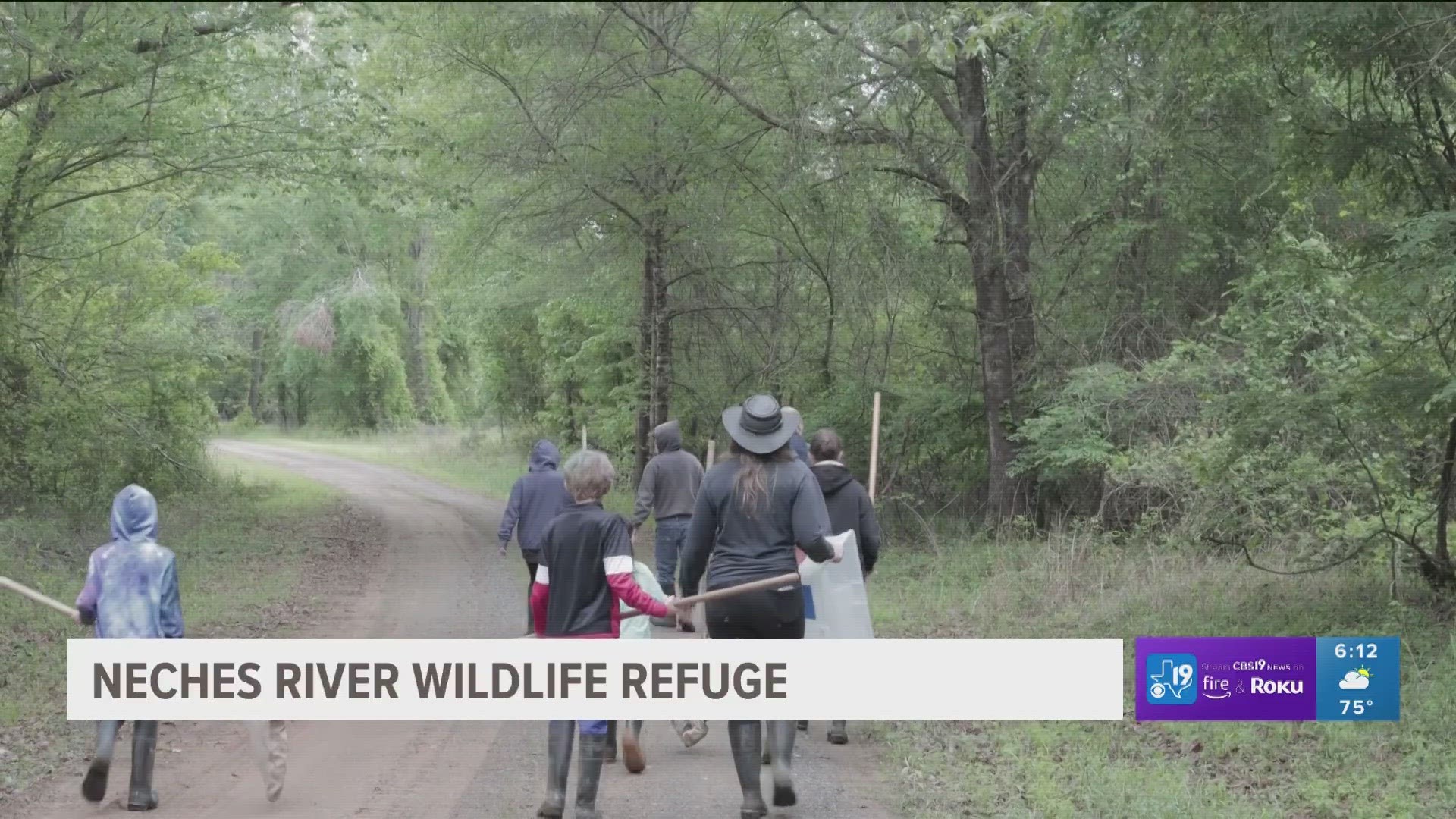JACKSONVILLE, Texas — The trails at the Neches River National Wildlife Refuge are relatively quiet. But recently the wooded pathways were full of visitors who hopefully got hooked on an East Texas treasure.
The Neches River Wildlife Refuge invited explorers to their annual field day. They learned that the little things can have the biggest impact on life.
For instance, the tiniest creatures play a major part of an East Texas National Wildlife Refuge. Dr. Michael Banks is with the friends of the Neches River Wildlife Refuge. This volunteer organization safeguards and looks after the refuge.
"It’s the perfect habitat for all the wildlife we have here in East Texas", Banks said.
To see that habitat we rode a trailer-tractor down a path taking us more than a mile into the Neches River Wildlife refuge. As we rode through the thick woods we talked with refuge manager is Leo Gustafson.
“So the refuge protects bottomland here on the river," Gustafson pointed out. "So, the river floods up, floods these bottomlands and the waters recede and that’s an interesting natural area because it’s important to the local wildlife because it creates a food chain.”
32 miles of the Neches River run through the wildlife refuge. Every winter when the Neches floods, its waters spills into these hardwood bottoms bringing a food source for tiny creatures.
"So there’s tons and tons of energy. So, these animals are what’s in there eating that. There most small macroinvertebrates," said professor emeritus at the University of Tyler Dr. Neal Ford.
Dr. Ford lead dip netting demonstration in the small pools of water that cover the hardwood bottom lands. He pointed out this is where the food chain starts.
Dr. Ford took a big scoop of leaves, debris and mud, then joyfully said, “this is the fun part and then we’re going to put it in here and see what we see.”
Ford found crawfish and tad poles that feed snakes, fish, and birds. Snakes, fish and birds feed larger predators who call these 10-thousand acres in Cherokee County home. It's all a part of a delicate balance of life.
“And that’s what this refuge was originally established for, was to protect that habitat and protect the wildlife that’s that habitat as well," said refuge manager Leo Gustafson.
That habitat includes plants. That’s why the Texas Conservation Alliance brought pollinators to be planted.
Sheryl Davis and her twins, Solon and Sagan, planted Gregg’s Mist, a colorful nectar source for bees and butterflies. She completed her mission of planting pollinators and showing her sons the importance of giving back to nature.
“I can’t think of a better way to spend a Saturday morning," Davis said.
This field day was just one day designed to raise awareness of how small things play a huge role in the balance of life and how small connections made here can lead to a bigger investment.
“Education is one thing, awareness, conservation. So there’s a lot of reasons for people to be here and enjoy it and then it becomes part of theirs and they’ll take care of it," Banks said.
The Neches River National Wildlife Refuge is open every day from sunrise to sunset. It's free to hike and explore more than 20-miles of trails. Just remember to bring water, sunscreen and mosquito repellant.

